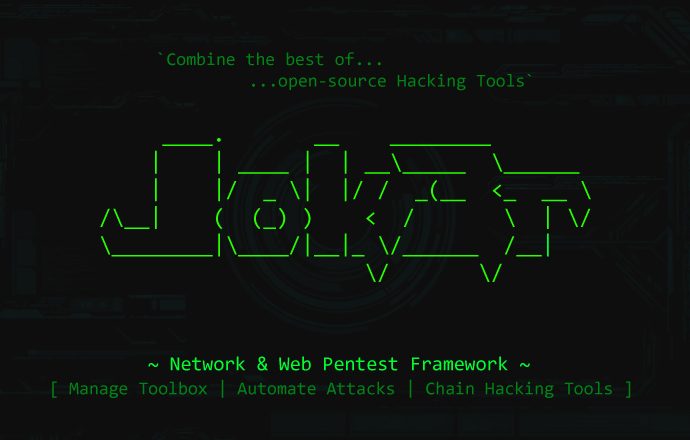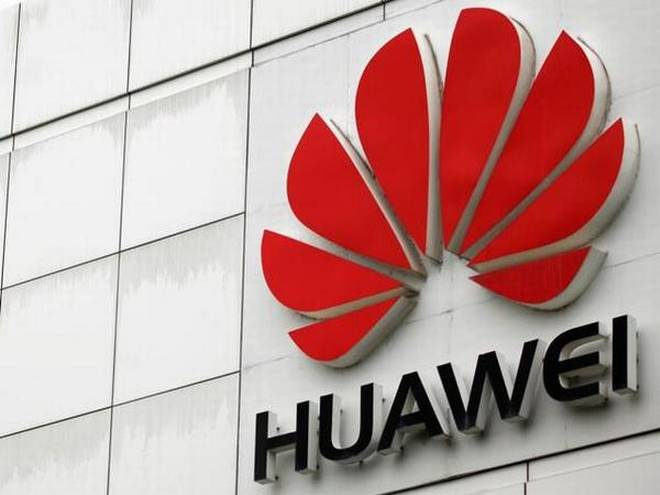
En la mayoría de los casos, las pruebas de penetración se realizan manualmente, es aquí donde el pentester utiliza todas las herramientas disponibles en Internet para encontrar errores o vulnerabilidades en las aplicaciones web. Hoy en día, el pentesting se realiza en herramientas automatizadas. Estas herramientas están recibiendo tanta atención, pues ahorran mucho tiempo, los pentesters puede hacer otras tareas desafiantes en su labor de hacking. Hoy estamos hablando de la herramienta JOK3R.
Expertos en seguridad en redes del Instituto Internacional de Seguridad Cibernética afirman que JOK3R es muy útil en la fase inicial de pruebas de penetración.
JOK3R es un marco de pentesting muy popular que se construye utilizando muchas herramientas populares. El objetivo principal de esta herramienta es ahorrar tiempo en el análisis del sistema objetivo. Entonces el pentester puede disfrutar la mayor parte del tiempo en otras labores de hacking. Esta herramienta ha sido probada en Kali Linux 2017.3.
INSTALACIÓN DE DVWA PARA EL OBJETIVO
INSTALACIÓN DE JOK3R PARA EL ATACANTE
- Para la clonación, escriba git clone https://github.com/koutto/jok3r.git
- Luego escriba cd jok3r
- Escriba pip install -r requirements.txt
- El permiso install-all.sh y install-dependencies.sh necesita ser cambiado. Para eso, teclee chmod u + x install-dependencies.sh y luego escriba chmod u + x install-all.sh
- Para verificar si el permiso ha cambiado, escriba ls -ltr
root@kali:/home/iicybersecurity/Downloads/jok3r# ls -ltr
total 176
-rw-r--r-- 1 root root 35149 Jan 24 00:02 LICENSE
-rw-r--r-- 1 root root 348 Jan 24 00:02 Dockerfile
-rw-r--r-- 1 root root 461 Jan 24 00:02 CHANGELOG.rst
-rw-r--r-- 1 root root 2519 Jan 24 00:02 TODO.rst
-rw-r--r-- 1 root root 41498 Jan 24 00:02 README.rst
-rw-r--r-- 1 root root 1934 Jan 24 00:02 jok3r.py
-rwxr-xr-x 1 root root 3126 Jan 24 00:02 install-dependencies.sh
-rwxr-xr-x 1 root root 129 Jan 24 00:02 install-all.sh
drwxr-xr-x 2 root root 4096 Jan 24 00:02 docker
drwxr-xr-x 3 root root 4096 Jan 24 00:02 doc
-rw-r--r-- 1 root root 249 Jan 24 00:02 requirements.txt
drwxr-xr-x 2 root root 4096 Jan 24 00:02 pictures
drwxr-xr-x 3 root root 4096 Jan 24 00:02 webshells
drwxr-xr-x 5 root root 4096 Jan 24 00:02 wordlists
drwxr-xr-x 10 root root 4096 Jan 24 00:24 lib
drwxr-xr-x 2 root root 4096 Jan 24 00:25 settings
-rw-r--r-- 1 root root 32768 Jan 24 00:25 local.db
drwxr-xr-x 5 root root 4096 Jan 24 00:25 toolbox
- Ahora escriba ./install-all.sh
- Escriba ./install-dependencies.sh
- Esta herramienta puede tardar en instalar dependencias, ya que algunos de los archivos tardan en ser descargados
- Si install-all.sh y install-dependencies.sh no funcionan correctamente o muestran un error al instalar las dependencias, considere el uso de la ventana acoplable para instalar todas las dependencias
- Durante la instalación se muestra la actualización de pip para eso, teclee sudo apt-get install python3-pip. Luego escriba pip –upgrade install pip
- Si la ventana acoplable no está instalada, escriba sudo apt-get update y luego escriba sudo apt-get install docker-ce o escriba sudo apt-get docker.io
- Escriba docker – version
root@kali:/home/iicybersecurity/Downloads/jok3r# docker --version
Docker version 18.06.1-ce, build e68fc7a
- Después de instalar el docker escriba cd docker
- Escriba sudo docker pull koutto / jok3r. Este comando instalará todas las dependencias o herramientas que necesita JOK3R
- Una vez instaladas las herramientas de JOK3R, escriba python3 jok3r.py –help
Atacante
vroot@kali:/home/iicybersecurity/Downloads/jok3r# python3 jok3r.py --help
____. __ ________ `Combine the best of...
| | ____ | | __\_____ \______ ...open-source Hacking Tools`
| |/ _ \| |/ / _(__ <_ __ \
/\__| ( (_) ) < / \ | \/
\________|\____/|__|_ \/______ /__| v2.0
\/ \/
~ Network & Web Pentest Framework ~
[ Manage Toolbox | Automate Attacks | Chain Hacking Tools ]
usage:
python3 jok3r.py []
Supported commands:
toolbox Manage the toolbox
info View supported services/options/checks
db Define missions scopes, keep tracks of targets & view attacks results
attack Run checks against targets
optional arguments:
-h, --help show this help message and exit
- Escriba python3 jok3r.py toolbox –show-all
- toolbox es la lista de herramientas que se han instalado
- –Show-all mostrará todas las herramientas instaladas
root@kali:/home/iicybersecurity/Downloads/jok3r# python3 jok3r.py toolbox --show-all
____. __ ________ `Combine the best of...
| | ____ | | __\_____ \______ ...open-source Hacking Tools`
| |/ _ \| |/ / _(__ <_ __ \
/\__| ( (_) ) < / \ | \/
\________|\____/|__|_ \/______ /__| v2.0
\/ \/
~ Network & Web Pentest Framework ~
[ Manage Toolbox | Automate Attacks | Chain Hacking Tools ]
Toolbox content - all services
+--------------------------------+----------+-----------------+-------------------------------------------------------------------------------------------------------------+
| Name | Service | Status/Update | Description |
+--------------------------------+----------+-----------------+-------------------------------------------------------------------------------------------------------------+
| ajpy | ajp | OK | 2019-01-24 | AJP requests crafter in order to communicate with AJP connectors |
| ftpmap | ftp | OK | 2019-01-24 | FTP Scanner detecting vulns based on softs/versions |
| halberd | http | OK | 2019-01-24 | HTTP load balancer detector |
| wafw00f | http | OK | 2019-01-24 | Identify and fingerprint WAF products protecting a website |
| whatweb | http | OK | 2019-01-24 | Identify CMS, blogging platforms, JS libraries, Web servers |
| optionsbleed | http | OK | 2019-01-24 | Test for the Optionsbleed bug in Apache httpd (CVE-2017-9798) |
| clusterd | http | OK | 2019-01-24 | Application server attack toolkit (JBoss, ColdFusion, Weblogic, Tomcat, Railo, Axis2, Glassfish) |
| wig | http | OK | 2019-01-24 | Identify several CMS and other administrative applications |
| fingerprinter | http | OK | 2019-01-24 | CMS/LMS/Library versions fingerprinter |
| cmsexplorer | http | OK | 2019-01-24 | Find plugins and themes installed in a CMS (WordPress, Drupal, Joomla, Mambo) |
| nikto | http | OK | 2019-01-24 | Web server scanner |
| iis-shortname-scanner | http | OK | 2019-01-24 | Scanner for IIS short filename (8.3) disclosure vulnerability |
| davscan | http | OK | 2019-01-24 | Fingerprint servers, finds exploits, scans WebDAV |
| shocker | http | OK | 2019-01-24 | Detect and exploit web servers vulnerable to Shellshock (CVE-2014-6271) |
| loubia | http | OK | 2019-01-24 | Exploitation tool for Java deserialize on t3(s) (Weblogic) |
| exploit-tomcat-cve2017-12617 | http | OK | 2019-01-24 | Exploit for Apache Tomcat (<9.0.1 (Beta), <8.5.23, <8.0.47, <7.0.8) JSP Upload Bypass RCE (CVE-2017-12617) | | exploit-weblogic-cve2017-3248 | http | OK | 2019-01-24 | Exploit for Weblogic RMI Registry UnicastRef Object Java Deserialization RCE (CVE-2017-3248) | | exploit-weblogic-cve2017-10271 | http | OK | 2019-01-24 | Exploit for Weblogic WLS-WSAT RCE (CVE-2017-10271) | | exploit-weblogic-cve2018-2893 | http | OK | 2019-01-24 | Exploit for Weblogic Java Deserialization RCE (CVE-2018-2893) | | struts-pwn-cve2017-9805 | http | OK | 2019-01-24 | Exploit for Apache Struts2 REST Plugin XStream RCE (CVE-2017-9805) | | struts-pwn-cve2018-11776 | http | OK | 2019-01-24 | Exploit for Apache Struts2 CVE-2018-11776 | | domiowned | http | OK | 2019-01-24 | Fingerprint/Exploit IBM/Lotus Domino servers | | cmsmap | http | OK | 2019-01-24 | Vulnerability scanner for CMS WordPress, Drupal, Joomla | | cmseek | http | OK | 2019-01-24 | Detect and bruteforce CMS | | drupwn | http | OK | 2019-01-24 | Fingerprint Drupal 7/8 and exploit CVE | | dirhunt | http | OK | 2019-01-24 | Find web directories without bruteforce | | photon | http | OK | 2019-01-24 | Fast we crawler that extracts urls, emails, files, website accounts, etc. | | angularjs-csti-scanner | http | OK | 2019-01-24 | Angular Client-Side Template Injection scanner | | wpforce | http | OK | 2019-01-24 | WordPress attack suite | | wpscan | http | OK | 2019-01-24 | WordPress vulnerability scanner | | wpseku | http | OK | 2019-01-24 | WordPress vulnerability scanner | | joomscan | http | OK | 2019-01-24 | Joomla vulnerability scanner by OWASP | | joomlascan | http | OK | 2019-01-24 | Joomla vulnerability scanner | | joomlavs | http | OK | 2019-01-24 | Joomla vulnerability scanner | | droopescan | http | OK | 2019-01-24 | Drupal & Silverstripe plugin-based vulnerability scanner | | magescan | http | OK | 2019-01-24 | Magento CMS scanner for information and misconfigurations | | vbscan | http | OK | 2019-01-24 | vBulletin vulnerability scanner by OWASP | | liferayscan | http | OK | 2019-01-24 | Liferay vulnerability scanner | | xbruteforcer | http | OK | 2019-01-24 | CMS bruteforce tool | | dirsearch | http | OK | 2019-01-24 | Web path scanner | | wfuzz | http | OK | 2019-01-24 | Web application fuzzer | | barmie | java-rmi | OK | 2019-01-24 | Java RMI enumeration and attack tool | | jmxbf | java-rmi | OK | 2019-01-24 | Bruteforce program to test weak accounts configured to access a JMX Registry | | jmxploit | java-rmi | OK | 2019-01-24 | JMX (post-)exploitation tool in Tomcat environment | | sjet | java-rmi | OK | 2019-01-24 | JMX exploitation tool for insecure configured JMX services | | twiddle | java-rmi | OK | 2019-01-24 | CLI-based JMX client | | jdwp-shellifier | jdwp | OK | 2019-01-24 | Exploitation tool to gain RCE on JDWP | | msdat | mssql | OK | 2019-01-24 | Microsoft SQL Database Attacking Tool | | changeme | multi | OK | 2019-01-24 | Default credentials scanner | | impacket | multi | OK | 2019-01-24 | Collection of Python classes for working with network protocols | | jexboss | multi | OK | 2019-01-24 | Exploitation tool for JBoss, Jenkins, Struts2, JMX (Tomcat) | | jok3r-scripts | multi | OK | 2019-01-24 | Various small stand-alone scripts and dependencies for other tools | | metasploit | multi | OK | 2019-01-24 | Metasploit framework | | nmap | multi | OK | 2019-01-24 | Nmap port scanner | | patator | multi | OK | 2019-01-24 | Multi-purpose brute-forcer, with a modular design and a flexible usage | | testssl | multi | OK | 2019-01-24 | TLS/SSL encryption checker | | tls-prober | multi | OK | 2019-01-24 | Tool to fingerprint SSL/TLS servers | | vuln-databases | multi | OK | 2019-01-24 | Vulnerabilities databases from Vulners.com, vuldb.com (NSE scripts) and exploit-db.com | | ysoserial | multi | OK | 2019-01-24 | Tool for generating payloads that exploit unsafe Java object deserialization | | odat | oracle | OK | 2019-01-24 | Oracle database attacking tool | | nullinux | smb | OK | 2019-01-24 | Enumeration tool for SMB on Windows | | smbmap | smb | OK | 2019-01-24 | SMB Shares enumeration tool | | smtp-user-enum | smtp | OK | 2019-01-24 | Enumerate valid users on SMTP via EXPN, VRFY or RCPT TO | | snmpwn | snmp | OK | 2019-01-24 | SNMPv3 User enumerator and Attack tool | | snmp-check | snmp | OK | 2019-01-24 | SNMP enumerator | | ssh-audit | ssh | OK | 2019-01-24 | SSH server auditing tool (banner, key exchange, encryption, mac, compression, compatibility, security, etc) | | osueta | ssh | OK | 2019-01-24 | Exploit for OpenSSH (versions <= 7.2 and >= 5.*) user enumeration timing attack |
| libssh-scanner | ssh | OK | 2019-01-24 | Exploit for authentication bypass (CVE-2018-10933) in libssh 0.6+ (fixed in 0.7.6 and 0.8.4) |
+--------------------------------+----------+-----------------+-------------------------------------------------------------------------------------------------------------+
- Esta herramienta ofrece opciones donde puede guardar todos los servicios escaneados en el destino. También puede ver qué servicio se ha ejecutado en el destino
- Para guardar primero tienes que crear la base de datos. Para eso escriba python3 jok3r.py db
- Para guardar primero tiene que crear la base de datos. Para eso teclee python3 jok3r.py db
- Para abrir más opciones en db, teclee help
root@kali:/home/iicybersecurity/Downloads/jok3r# python3 jok3r.py db
____. __ ________ `Combine the best of...
| | ____ | | __\_____ \______ ...open-source Hacking Tools`
| |/ _ \| |/ / _(__ <_ __ \
/\__| ( (_) ) < / \ | \/
\________|\____/|__|_ \/______ /__| v2.0
\/ \/
~ Network & Web Pentest Framework ~
[ Manage Toolbox | Automate Attacks | Chain Hacking Tools ]
The local database stores the missions, targets info & attacks results.
This shell allows for easy access to this database. New missions can be added and
scopes can be defined by importing new targets.
ok3rdb[default]> help
Documented commands (type help ):
Attacks results
results Attacks results
Import
nmap Import Nmap results
Missions data
creds Credentials in the current mission scope
hosts Hosts in the current mission scope
mission Manage missions
services Services in the current mission scope
Other
alias Manage aliases
help Display this help message
history View, run, edit, save, or clear previously entered commands
macro Manage macros
quit Exit this application
set Set a settable parameter or show current settings of parameters
shell Execute a command as if at the OS prompt
- Luego escriba missionproproject
- Después de crear la misión, presione ctrl + c
- Luego escriba python3 jok3r.py attack -t http://192.168.1.105/ –add testproject
- attack se usa para comprobar el objetivo
- -t se utiliza para entrar en destino.
- –add se utiliza para guardar los resultados en la base de datos de JOK3R
root@kali:/home/iicybersecurity/Downloads/jok3r# python3 jok3r.py attack -t http://192.168.1.105/ --add testproject
____. __ ________ `Combine the best of...
| | ____ | | __\_____ \______ ...open-source Hacking Tools`
| |/ _ \| |/ / _(__ <_ __ \
/\__| ( (_) ) < / \ | \/
\________|\____/|__|_ \/______ /__| v2.0
\/ \/
~ Network & Web Pentest Framework ~
[ Manage Toolbox | Automate Attacks | Chain Hacking Tools ]
[] URL given as target, targeted service is HTTP [] Check if target is reachable and grab banner using Nmap…
[+] Target URL http://192.168.1.105/ is reachable
[] Results from this attack will be saved under mission "testproject" in database [] A matching service has been found in the database
[+] Updated: host 192.168.1.105 | port 80/tcp | service http
+----+---------------+----------+------+-------+---------+-------------------------------------------------------------------+-----------------------+
| id | IP | Hostname | Port | Proto | Service | Banner | URL |
+----+---------------+----------+------+-------+---------+-------------------------------------------------------------------+-----------------------+
| >1 | 192.168.1.105 | dvwa | 80 | tcp | http | product: Apache httpd version: 2.2.14 extrainfo: (Unix) DAV/2 | http://192.168.1.105/ |
| | | | | | | mod_ssl/2.2.14 OpenSSL/0.9.8l PHP/5.3.1 mod_apreq2-20090110/2.7.1 | |
| | | | | | | mod_perl/2.0.4 Perl/v5.10.1 | |
+----+---------------+----------+------+-------+---------+-------------------------------------------------------------------+-----------------------+
[?] Start attack ? [Y/n] Y
[*] HTTP Response headers:
Date: Thu, 24 Jan 2019 09:55:41 GMT
Server: Apache/2.2.14 (Unix) DAV/2 mod_ssl/2.2.14 OpenSSL/0.9.8l PHP/5.3.1 mod_apreq2-20090110/2.7.1 mod_perl/2.0.4 Perl/v5.10.1
X-Powered-By: PHP/5.3.1
Set-Cookie: PHPSESSID=c03n54d2gciu1rh9niscqmij67; path=/
Set-Cookie: security=high
Expires: Tue, 23 Jun 2009 12:00:00 GMT
Cache-Control: no-cache, must-revalidate
Pragma: no-cache
Content-Length: 1224
Content-Type: text/html;charset=utf-8
[] Context-specific options set for this target: +----------+-------+ | option | value | +----------+-------+ | language | php | +----------+-------+ [] [SMART] Running initialization method…
{'Perl', 'Apache'}
[] [SMART] Wappalyzer fingerprinting returns: ['apache', 'mod_ssl', 'mod_perl', 'unix', 'php', 'perl', 'openssl'] [] [SMART] Detected option (no update): language = php
- Después de ejecutar la consulta anterior, JOCK3R ha iniciado el escaneo de nmap en todos los servicios. Esta herramienta escaneará todos los servicios
- El servicio anterior ha detectado el idioma y el servidor del sitio web de destino
- La información anterior se puede utilizar en otras actividades de hacking
- Para escanear todos los servicios, simplemente escriba Y cuando se le solicite escanear otro servicio. Hacer específico al escanear
[>] [Recon][Check 13/14] crawling-fast > Crawl website quickly, analyze interesting files/directories
[?] Run command #01 ? [Y/n/t/w/q] Y
cmd> dirhunt http://192.168.1.105/
Welcome to Dirhunt v0.6.0 using Python 2.7.15+
Starting…
[302] http://192.168.1.105/ (Redirect)
Redirect to: http://192.168.1.105/
[200] http://192.168.1.105/login.php (HTML document)
Index file found: index.php
[200] http://192.168.1.105/dvwa/css/ (Index Of) (Nothing interesting)
[200] http://192.168.1.105/dvwa/ (Index Of) (Nothing interesting)
[200] http://192.168.1.105/dvwa/images/ (Index Of) (Nothing interesting)
[200] http://192.168.1.105/dvwa/js/ (Index Of) (Nothing interesting)
[200] http://192.168.1.105/dvwa/includes/ (Index Of)
Interesting extension files: dvwaPage.inc.php (13K), dvwaPhpIds.inc.php (2.5K)
[200] http://192.168.1.105/dvwa/includes/DBMS/ (Index Of)
Interesting extension files: DBMS.php (2.4K), MySQL.php (2.9K), PGSQL.php (3.4K)
━━━━━━━━━━━━━━━━━━━━━━━━━━━━━━━━━━━━━━━━━━━━━━━━━━━━━━━━━━━━━━━━━━━━━━━━━━━━━━━━━━━━━━━━━━━━━━━━━━━━━━━━━━━━━━━━━━━━━━━━━━━━━━━━━━━━━━
Starting…
http://192.168.1.105/login.php
(200) ( 154B) http://192.168.1.105/dvwa/includes/dvwaPage.inc.php [13K ]
Warning: define() expects at least 2 parameters,
(200) ( 156B) http://192.168.1.105/dvwa/includes/dvwaPhpIds.inc.php [2.5K]
Warning: define() expects at least 2 parameters,
(200) ( 154B) http://192.168.1.105/dvwa/includes/DBMS/MySQL.php [2.9K]
Fatal error: Call to undefined function dvwaMessa
(200) ( 626B) http://192.168.1.105/dvwa/includes/DBMS/DBMS.php [2.4K]
Notice: Undefined variable: DBMS in /opt/lampp (200) ( 154B) http://192.168.1.105/dvwa/includes/DBMS/PGSQL.php [3.4K]
Fatal error: Call to undefined function dvwaMessa
[>] [Recon][Check 14/14] crawling-fast2 > Crawl website and extract URLs, files, intel & endpoints
- El servicio anterior utilizado es el rastreo donde esta herramienta intenta analizar archivos y directorios que se pueden usar en futuros ataques de hacking
- Mientras se rastrean algunas de las páginas, el directorio dvwa denominado como incluye tiene páginas como mysql.php, dbms.php, pgsql que se pueden usar en otras actividades de hacking
- El escaneo muestra las vulnerabilidades mencionadas en CVE
[>] [Vulnscan][Check 01/29] vuln-lookup > Vulnerability lookup in Vulners.com (NSE scripts) and exploit-db.com (lots of false positive !)
[?] Run command #01 ? [Y/n/t/w/q] Y
cmd> sudo nmap -sT -sV -T5 -Pn -p 80 --script nmap-vulners/vulners.nse --script-args vulscandb=scipvuldb.csv 192.168.1.105 -oX /tmp/nmaptmp.xml; ./exploit-database/searchsploit --nmap /tmp/nmaptmp.xml; sudo rm -f /tmp/nmaptmp.xml
Starting Nmap 7.70 ( https://nmap.org ) at 2019-01-24 06:02 EST
Nmap scan report for dvwa (192.168.1.105)
Host is up (0.00046s latency).
PORT STATE SERVICE VERSION
80/tcp open http Apache httpd 2.2.14 ((Unix) DAV/2 mod_ssl/2.2.14 OpenSSL/0.9.8l PHP/5.3.1 mod_apreq2-20090110/2.7.1 mod_perl/2.0.4 Perl/v5.10.1)
|http-server-header: Apache/2.2.14 (Unix) DAV/2 mod_ssl/2.2.14 OpenSSL/0.9.8l PHP/5.3.1 mod_apreq2-20090110/2.7.1 mod_perl/2.0.4 Perl/v5.10.1 | vulners: | cpe:/a:apache:http_server:2.2.14: | CVE-2010-0425 10.0 https://vulners.com/cve/CVE-2010-0425 | CVE-2011-3192 7.8 https://vulners.com/cve/CVE-2011-3192 | CVE-2013-2249 7.5 https://vulners.com/cve/CVE-2013-2249 | CVE-2017-7679 7.5 https://vulners.com/cve/CVE-2017-7679 | CVE-2017-7668 7.5 https://vulners.com/cve/CVE-2017-7668 | CVE-2017-3167 7.5 https://vulners.com/cve/CVE-2017-3167 | CVE-2017-3169 7.5 https://vulners.com/cve/CVE-2017-3169 | CVE-2012-0883 6.9 https://vulners.com/cve/CVE-2012-0883 | CVE-2009-3555 5.8 https://vulners.com/cve/CVE-2009-3555 | CVE-2013-1862 5.1 https://vulners.com/cve/CVE-2013-1862 | CVE-2014-0098 5.0 https://vulners.com/cve/CVE-2014-0098 | CVE-2007-6750 5.0 https://vulners.com/cve/CVE-2007-6750 | CVE-2013-6438 5.0 https://vulners.com/cve/CVE-2013-6438 | CVE-2011-3368 5.0 https://vulners.com/cve/CVE-2011-3368 | CVE-2012-4557 5.0 https://vulners.com/cve/CVE-2012-4557 | CVE-2014-0231 5.0 https://vulners.com/cve/CVE-2014-0231 | CVE-2010-0408 5.0 https://vulners.com/cve/CVE-2010-0408 | CVE-2010-1452 5.0 https://vulners.com/cve/CVE-2010-1452 | CVE-2010-2068 5.0 https://vulners.com/cve/CVE-2010-2068 | CVE-2012-0031 4.6 https://vulners.com/cve/CVE-2012-0031 | CVE-2011-3607 4.4 https://vulners.com/cve/CVE-2011-3607 | CVE-2012-0053 4.3 https://vulners.com/cve/CVE-2012-0053 | CVE-2011-3348 4.3 https://vulners.com/cve/CVE-2011-3348 | CVE-2016-4975 4.3 https://vulners.com/cve/CVE-2016-4975 | CVE-2010-0434 4.3 https://vulners.com/cve/CVE-2010-0434 | CVE-2011-4317 4.3 https://vulners.com/cve/CVE-2011-4317 | CVE-2013-1896 4.3 https://vulners.com/cve/CVE-2013-1896 | CVE-2011-0419 4.3 https://vulners.com/cve/CVE-2011-0419 | CVE-2012-4558 4.3 https://vulners.com/cve/CVE-2012-4558 | CVE-2012-3499 4.3 https://vulners.com/cve/CVE-2012-3499 | CVE-2011-3639 4.3 https://vulners.com/cve/CVE-2011-3639 | CVE-2016-8612 3.3 https://vulners.com/cve/CVE-2016-8612 | CVE-2012-2687 2.6 https://vulners.com/cve/CVE-2012-2687 | CVE-2011-4415 1.2 https://vulners.com/cve/CVE-2011-4415
Service detection performed. Please report any incorrect results at https://nmap.org/submit/ .
Nmap done: 1 IP address (1 host up) scanned in 7.72 seconds
[i] SearchSploit's XML mode (without verbose enabled). To enable: searchsploit -v --xml…
[i] Reading: '/tmp/nmaptmp.xml'
[i] ./exploit-database/searchsploit -t apache httpd 2 2 14
- Después de ejecutar la consulta anterior, se muestran las vulnerabilidades CVE que se pueden usar en futuros ataques de hacking
- Se muestran muchas vulnerabilidades en las que figuran CVE los últimos años
- Más escaneo utiliza nikto para escanear en busca de vulnerabilidades web
[>] [Vulnscan][Check 03/29] vulnscan-multi-nikto > Check for multiple web vulnerabilities/misconfigurations
[?] Run command #01 ? [Y/n/t/w/q] Y
cmd> cd program; perl ./nikto.pl -host dvwa -port 80
- Nikto v2.1.6
Target IP: 192.168.1.105
Target Hostname: dvwa
Target Port: 80
+ Start Time: 2019-01-24 06:14:56 (GMT-5)
Server: Apache/2.2.14 (Unix) DAV/2 mod_ssl/2.2.14 OpenSSL/0.9.8l PHP/5.3.1 mod_apreq2-20090110/2.7.1 mod_perl/2.0.4 Perl/v5.10.1
Retrieved x-powered-by header: PHP/5.3.1
The anti-clickjacking X-Frame-Options header is not present.
The X-XSS-Protection header is not defined. This header can hint to the user agent to protect against some forms of XSS
The X-Content-Type-Options header is not set. This could allow the user agent to render the content of the site in a different fashion to the MIME type
Cookie PHPSESSID created without the httponly flag
Cookie security created without the httponly flag
Root page / redirects to: login.php
Server leaks inodes via ETags, header found with file /robots.txt, inode: 9210, size: 26, mtime: Tue Aug 24 15:45:32 2010
Apache mod_negotiation is enabled with MultiViews, which allows attackers to easily brute force file names. See http://www.wisec.it/sectou.php?id=4698ebdc59d15. The following alternatives for 'index' were found: HTTP_NOT_FOUND.html.var, HTTP_NOT_FOUND.html.var, HTTP_NOT_FOUND.html.var, HTTP_NOT_FOUND.html.var, HTTP_NOT_FOUND.html.var, HTTP_NOT_FOUND.html.var, HTTP_NOT_FOUND.html.var, HTTP_NOT_FOUND.html.var, HTTP_NOT_FOUND.html.var, HTTP_NOT_FOUND.html.var, HTTP_NOT_FOUND.html.var, HTTP_NOT_FOUND.html.var, HTTP_NOT_FOUND.html.var, HTTP_NOT_FOUND.html.var, HTTP_NOT_FOUND.html.var
Perl/v5.10.1 appears to be outdated (current is at least v5.14.2)
mod_ssl/2.2.14 appears to be outdated (current is at least 2.8.31) (may depend on server version)
Apache/2.2.14 appears to be outdated (current is at least Apache/2.4.12). Apache 2.0.65 (final release) and 2.2.29 are also current.
PHP/5.3.1 appears to be outdated (current is at least 5.6.9). PHP 5.5.25 and 5.4.41 are also current.
mod_perl/2.0.4 appears to be outdated (current is at least 2.0.7)
OpenSSL/0.9.8l appears to be outdated (current is at least 1.0.1j). OpenSSL 1.0.0o and 0.9.8zc are also current.
mod_ssl/2.2.14 OpenSSL/0.9.8l PHP/5.3.1 mod_apreq2-20090110/2.7.1 mod_perl/2.0.4 Perl/v5.10.1 - mod_ssl 2.8.7 and lower are vulnerable to a remote buffer overflow which may allow a remote shell. http://cve.mitre.org/cgi-bin/cvename.cgi?name=CVE-2002-0082, OSVDB-756.
OSVDB-877: HTTP TRACE method is active, suggesting the host is vulnerable to XST
OSVDB-112004: /cgi-bin/printenv: Site appears vulnerable to the 'shellshock' vulnerability (http://cve.mitre.org/cgi-bin/cvename.cgi?name=CVE-2014-6271).
OSVDB-112004: /cgi-bin/printenv: Site appears vulnerable to the 'shellshock' vulnerability (http://cve.mitre.org/cgi-bin/cvename.cgi?name=CVE-2014-6278).
OSVDB-3268: /config/: Directory indexing found.
/config/: Configuration information may be available remotely.
OSVDB-12184: /?=PHPB8B5F2A0-3C92-11d3-A3A9-4C7B08C10000: PHP reveals potentially sensitive information via certain HTTP requests that contain specific QUERY strings.
OSVDB-12184: /?=PHPE9568F36-D428-11d2-A769-00AA001ACF42: PHP reveals potentially sensitive information via certain HTTP requests that contain specific QUERY strings.
OSVDB-12184: /?=PHPE9568F34-D428-11d2-A769-00AA001ACF42: PHP reveals potentially sensitive information via certain HTTP requests that contain specific QUERY strings.
OSVDB-12184: /?=PHPE9568F35-D428-11d2-A769-00AA001ACF42: PHP reveals potentially sensitive information via certain HTTP requests that contain specific QUERY strings.
OSVDB-561: /server-status: This reveals Apache information. Comment out appropriate line in the Apache conf file or restrict access to allowed sources.
OSVDB-3092: /phpmyadmin/changelog.php: phpMyAdmin is for managing MySQL databases, and should be protected or limited to authorized hosts.
OSVDB-3092: /phpmyadmin/ChangeLog: phpMyAdmin is for managing MySQL databases, and should be protected or limited to authorized hosts.
OSVDB-3233: /cgi-bin/printenv: Apache 2.0 default script is executable and gives server environment variables. All default scripts should be removed. It may also allow XSS types of attacks. http://www.securityfocus.com/bid/4431.
OSVDB-3233: /cgi-bin/test-cgi: Apache 2.0 default script is executable and reveals system information. All default scripts should be removed.
OSVDB-3268: /icons/: Directory indexing found.
OSVDB-3268: /docs/: Directory indexing found.
OSVDB-3092: /CHANGELOG.txt: A changelog was found.
OSVDB-3233: /icons/README: Apache default file found.
/login.php: Admin login page/section found.
/phpmyadmin/: phpMyAdmin directory found
OSVDB-3092: /.svn/entries: Subversion Entries file may contain directory listing information.
OSVDB-3092: /phpmyadmin/Documentation.html: phpMyAdmin is for managing MySQL databases, and should be protected or limited to authorized hosts.
/CHANGELOG.txt: Version number implies that there is a SQL Injection in Drupal 7, can be used for authentication bypass (Drupageddon: see https://www.sektioneins.de/advisories/advisory-012014-drupal-pre-auth-sql-injection-vulnerability.html).
/server-status: Apache server-status interface found (pass protected)
8167 requests: 0 error(s) and 39 item(s) reported on remote host
+ End Time: 2019-01-24 06:15:35 (GMT-5) (39 seconds)
1 host(s) tested
- La herramienta anterior muestra que muchas de las configuraciones no se realizan correctamente, por eso los ataques de fuerza bruta se pueden hacer fácilmente
- Algunas de las versiones de apache, perl están desactualizadas. Hay ciertas solicitudes HTTP que pueden generar información confidencial
- Esta información puede ser utilizada en otras actividades de hacking
- También ejecuta herramienta como changme
cmd> python3 changeme.py -v --protocols http 192.168.1.105:80
#####################################################
_
| |_ _ _ _ _ _ _ _ _ _
/ _| ' \ / | '_ \ / _ |/ \ '_ ` _ \ / _ \
| (| | | | (| | | | | (| | / | | | | | __/
___|| ||__,|| ||_, |___|| || ||__|
|_/
v1.1
Default Credential Scanner by @ztgrace
#####################################################
Loaded 113 default credential profiles
Loaded 324 default credentials
[06:28:15] Configured protocols: http
[06:28:15] Loading creds into queue
[06:28:15] Fingerprinting completed
[06:28:15] Scanning Completed
No default credentials found
[*] [SMART] Running post-check method "changeme_valid_creds" …
[*] [Vulnscan][Check 05/29] webdav-scan-davscan > Skipped because target's context is not matching
[*] [Vulnscan][Check 06/29] webdav-scan-msf > Skipped because target's context is not matching
[*] [Vulnscan][Check 07/29] webdav-internal-ip-disclosure > Skipped because target's context is not matching
[*] [Vulnscan][Check 08/29] webdav-website-content > Skipped because target's context is not matching
- Después de explorar más el destino, muestra que el contexto de destino no coincide porque esta herramienta detecta las credenciales de puerta trasera predeterminadas
- Ahora está escaneando con otra herramienta de choque de shell que muestra si el objetivo es vulnerable a la explotación
[>] [Vulnscan][Check 11/29] shellshock-scan > Detect if web server is vulnerable to Shellshock (CVE-2014-6271)
[?] Run command #01 ? [Y/n/t/w/q] Y
cmd> python2.7 shocker.py --Host 192.168.1.105 --port 80
.-. . .
( )| |
-. |--. .-. .-.|.-. .-. .--. ( )| |( )( |-.'(.-' | -' ' --' -''-`--'' v1.1
Tom Watson, tom.watson@nccgroup.trust
https://www.github.com/nccgroup/shocker
Released under the GNU Affero General Public License
(https://www.gnu.org/licenses/agpl-3.0.html)
[+] 402 potential targets imported from ./shocker-cgi_list
[+] Checking connectivity with target…
[+] Target was reachable
[+] Looking for vulnerabilities on 192.168.1.105:80
>>>>>>>>>>>>>>>>>>>>>>>>>>>>>>>>>>>>>>>>>>>>>>>>>>
[+] 3 potential targets found, attempting exploits
[+] The following URLs appear to be exploitable:
[1] http://192.168.1.105:80/cgi-bin/printenv
[2] http://192.168.1.105:80/cgi-bin/test-cgi
- La herramienta Shell Shocker muestra que el objetivo puede ser explotado usando los 2 enlaces anteriores. Esta información puede ser utilizada en otras actividades de hacking
- Algunas veces, si la herramienta se bloquea durante el funcionamiento, presione ctrl + c para iniciar un nuevo escaneo
- El escaneo muestra que algunas de las herramientas no son compatibles como se muestra a continuación
Category > Exploit
[*] [Exploit][Check 01/11] jboss-deploy-shell > Skipped because target's context is not matching
[*] [Exploit][Check 02/11] struts2-rce-cve2017-5638 > Skipped because target's context is not matching
[*] [Exploit][Check 03/11] struts2-rce-cve2017-9805 > Skipped because target's context is not matching
[*] [Exploit][Check 04/11] struts2-rce-cve2018-11776 > Skipped because target's context is not matching
[*] [Exploit][Check 05/11] tomcat-rce-cve2017-12617 > Skipped because target's context is not matching
[*] [Exploit][Check 06/11] jenkins-cliport-deserialize > Skipped because target's context is not matching
[*] [Exploit][Check 07/11] weblogic-t3-deserialize-cve2015-4852 > Skipped because target's context is not matching
[*] [Exploit][Check 08/11] weblogic-t3-deserialize-cve2017-3248 > Skipped because target's context is not matching
[*] [Exploit][Check 09/11] weblogic-t3-deserialize-cve2018-2893 > Skipped because target's context is not matching
[*] [Exploit][Check 10/11] weblogic-wls-wsat-cve2017-10271 > Skipped because target's context is not matching
[*] [Exploit][Check 11/11] drupal-cve-exploit > Skipped because target's context is not matching
- Las herramientas anteriores no son compatibles ya que las herramientas son de contexto diferente y el objetivo tiene diferentes funcionalidades
- Usando otra herramienta wfuzz. Wfuzz es una aplicación web de fuerza bruta
cmd> ./wfuzz -c -u http://192.168.1.105//FUZZ -w /home/iicybersecurity/Downloads/jok3r/wordlists/services/http/discovery/opendoor-paths.txt --hc 400,404,500,000
Warning: Pycurl is not compiled against Openssl. Wfuzz might not work correctly when fuzzing SSL sites. Check Wfuzz's documentation for more information.
Wfuzz 2.3.4 - The Web Fuzzer *
Target: http://192.168.1.105//FUZZ
Total requests: 36942
==================================================================
ID Response Lines Word Chars Payload
000431: C=200 101 L 135 W 1480 Ch ".svn/all-wcprops"
000432: C=200 572 L 151 W 2726 Ch ".svn/entries"
000434: C=200 12 L 61 W 803 Ch ".svn/prop-base/"
000435: C=200 11 L 52 W 667 Ch ".svn/props/"
000436: C=200 25 L 175 W 2455 Ch ".svn/text-base/"
000437: C=200 4 L 39 W 538 Ch ".svn/text-base/index.php.svn-base"
000438: C=200 14 L 76 W 1010 Ch ".svn/tmp/"
001959: C=200 129 L 594 W 5066 Ch "CHANGELOG.txt"
001973: C=200 622 L 5214 W 33107 Ch "COPYING.txt"
002936: C=200 119 L 706 W 4934 Ch "README.txt"
004298: C=302 0 L 0 W 0 Ch "about.php"
004948: C=404 46 L 113 W 1118 Ch "admin/FCKeditor/editor/filemanager/browser/default/connectors/jsp/connector005061: C=404 46 L 113 W 1118 Ch "admin/fckeditor/editor/filemanager/browser/default/connectors/asp/connector005062: C=404 46 L 113 W 1118 Ch "admin/fckeditor/editor/filemanager/browser/default/connectors/aspx/connecto005063: C=404 46 L 113 W 1118 Ch "admin/fckeditor/editor/filemanager/browser/default/connectors/php/connector006673: C=404 46 L 113 W 1118 Ch "all/modules/ogdi_field/plugins/dataTables/extras/TableTools/media/swf/ZeroC007150: C=404 46 L 113 W 1118 Ch "apps/trac/pragyan/browser/trunk/cms/modules/article/fckEditor/editor/filema010085: C=403 44 L 109 W 1122 Ch "cgi-bin/"
010087: C=403 44 L 108 W 1108 Ch "cgi-bin/awstats.pl"
011523: C=200 12 L 61 W 776 Ch "config/"
013659: C=200 11 L 52 W 650 Ch "docs/"
013930: C=404 46 L 113 W 1118 Ch "dreamedit/includes/FCKEditor_/editor/filemanager/browser/mcpuk/browser.html014071: C=200 15 L 84 W 1101 Ch "dvwa/"
015076: C=403 44 L 109 W 1122 Ch "error/"
015477: C=200 12 L 60 W 772 Ch "external/"
015653: C=200 1 L 6 W 1549 Ch "favicon.ico"
015697: C=404 46 L 113 W 1118 Ch "fckeditor/editor/filemanager/browser/default/connectors/aspx/connector.aspx016920: C=404 46 L 113 W 1118 Ch "galeria/zp-core/plugins/tiny_mce/plugins/ajaxfilemanager/ajax_create_folder016925: C=404 46 L 113 W 1118 Ch "galerie/zp-core/plugins/tiny_mce/plugins/ajaxfilemanager/ajax_create_folder016955: C=404 46 L 113 W 1118 Ch "gallery/zp-core/plugins/tiny_mce/plugins/ajaxfilemanager/ajax_create_folder018593: C=200 167 L 1300 W 18876 Ch "icons/"
018642: C=302 0 L 0 W 0 Ch "ids_log.php"
019087: C=404 46 L 113 W 1118 Ch "includes/fckeditor/editor/filemanager/browser/default/connectors/asp/connec019088: C=404 46 L 113 W 1118 Ch "includes/fckeditor/editor/filemanager/browser/default/connectors/aspx/conne019089: C=404 46 L 113 W 1118 Ch "includes/fckeditor/editor/filemanager/browser/default/connectors/php/connec019142: C=302 0 L 0 W 0 Ch "index.php"
019762: C=404 46 L 113 W 1118 Ch "ispcp/browser/trunk/gui/tools/filemanager/plugins/fckeditor/editor/filemana020212: C=404 46 L 113 W 1118 Ch "js/fckeditor/editor/filemanager/browser/default/connectors/php/connector.ph021551: C=200 65 L 108 W 1224 Ch "login.php"
021667: C=302 0 L 0 W 0 Ch "logout.php"
025961: C=404 46 L 113 W 1118 Ch "photo/zp-core/plugins/tiny_mce/plugins/ajaxfilemanager/ajax_create_folder.p026010: C=404 46 L 113 W 1118 Ch "photos/zp-core/plugins/tiny_mce/plugins/ajaxfilemanager/ajax_create_folder.026053: C=200 4 L 20 W 148 Ch "php.ini"
026339: C=302 0 L 0 W 0 Ch "phpinfo.php"
026390: C=200 0 L 0 W 0 Ch "phpmyadmin/phpinfo.php"
026389: C=200 72 L 206 W 2726 Ch "phpmyadmin/"
026673: C=404 46 L 113 W 1118 Ch "plugins/fckeditor/fckeditor/editor/filemanager/browser/default/browser.html026675: C=404 46 L 113 W 1118 Ch "plugins/p_fckeditor/fckeditor/editor/filemanager/browser/default/browser.ht026676: C=404 46 L 113 W 1118 Ch "plugins/p_fckeditor/fckeditor/editor/filemanager/connectors/uploadtest.html028932: C=200 1 L 4 W 26 Ch "robots.txt"
029580: C=404 46 L 113 W 1118 Ch "script/jqueryplugins/dataTables/extras/TableTools/media/swf/ZeroClipboard.s029817: C=302 0 L 0 W 0 Ch "security.php"
029987: C=200 51 L 292 W 2787 Ch "server-status/"
029986: C=200 1253 L 8719 W 120232 Ch "server-info/"
030080: C=404 46 L 113 W 1118 Ch "servlet/Oracle.xml.xsql.XSQLServlet/soapdocs/webapps/soap/WEB-INF/config/so030101: C=404 46 L 113 W 1118 Ch "servlet/oracle.xml.xsql.XSQLServlet/soapdocs/webapps/soap/WEB-INF/config/so030182: C=200 80 L 227 W 3549 Ch "setup.php"
036787: C=404 46 L 113 W 1118 Ch "zenphoto/zp-core/plugins/tiny_mce/plugins/ajaxfilemanager/ajax_create_folde
Total time: 110.2424
Processed Requests: 36942
Filtered Requests: 36874
Requests/sec.: 335.0979
- La consulta anterior intenta encontrar directorios, archivos que no están vinculados directamente. Después de ejecutar la consulta anterior, wfuzz ha encontrado ajax, servlets y algunos complementos
- Estos datos pueden ser utilizados en otros ataques de hacking
Como puede ver, esta herramienta comprende muchas herramientas pequeñas que muestran mucha información vital. Para seguir escaneando puedes seguir otros tutoriales.
















